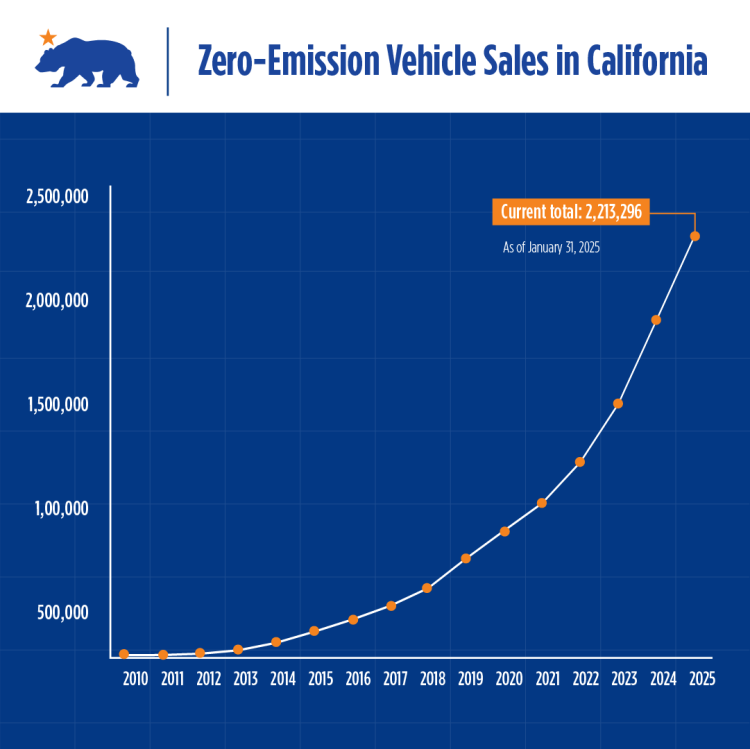In the fourth quarter of 2024, Californians purchased 108,303 zero-emission vehicles (ZEVs), representing 25.1% of all new vehicle sales in the state. This marks a slight increase year-over-year compared to the fourth quarter of 2023. California eclipsed the 2 million ZEVs sold mark in 2024.

With more electric vehicles (EVs) on the road every day, consumers are responding to the state's efforts to build a bigger, better, and more reliable charging network.
California has doubled down on EV infrastructure across the state, approving a $1.4 billion investment plan that will expand the most extensive charging and hydrogen network in the country. The funds approved in December will result in nearly 17,000 new light-duty chargers statewide.
"With each quarter of sales data, one thing becomes clear: zero-emission vehicles are here to stay," said California Energy Commission (CEC) Chair David Hochschild. "Each day, more and more Californians are choosing to go electric and making the air cleaner for communities throughout the state."
THE NATION'S LEADER IN ZEV VEHICLES AND INFRASTRUCTURE
California's clean car leadership is unmatched. With the rise in EV demand, the state is committed to rapidly deploying funds to develop and ensure an accessible, reliable, and easy-to-use charging network. In recent months, the state has doubled down on improving the network:
- 150,000 public or shared private EV chargers have been installed throughout California, plus over 500,000 at-home chargers.
- Thousands of dollars in grants and rebates available for low-income Californians.
Learn more at ClimateAction.ca.gov or ElectricForAll.org.
BUILDING A BIGGER, BETTER CHARGING NETWORK
State agencies are working to speed up charger deployment, cut through red tape, establish guidelines, plan for the expected increased grid demand, and efficiently electrify charging stations through local utilities. This includes:
In all, California is spending billions to speed ZEV infrastructure deployment, tear down barriers, improve the driver experience, and deploy infrastructure in hard-to-reach and low-income areas. Thirty percent of new ZEVs sold in the U.S. are sold in California, according to the California Air Resources Board - the experience for those drivers is getting better by the day.
About the California Energy Commission
The California Energy Commission is the state's primary energy policy and planning agency. It has seven core responsibilities: advancing state energy policy, encouraging energy efficiency, certifying thermal power plants, investing in energy innovation, developing renewable energy, transforming transportation, and preparing for energy emergencies.
- Gathering better data on EV charger counts.
- Prioritizing shovel-ready projects for both state and federal incentives.
- Developing a comprehensive infrastructure plan that lays out the overall strategy to meet California's ZEV goals.
- Establishing charger reliability standards.









